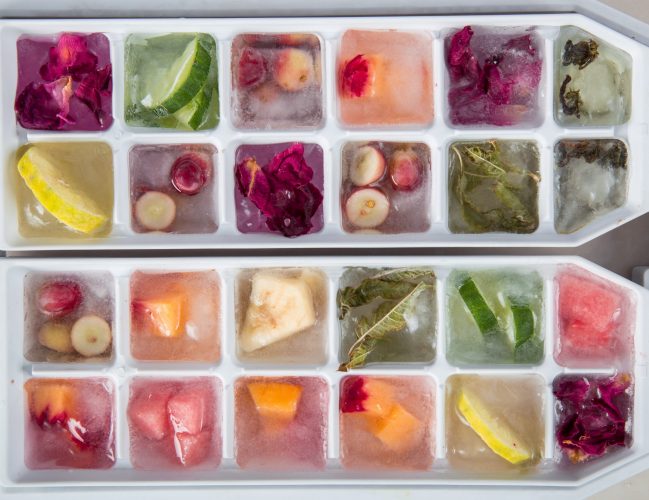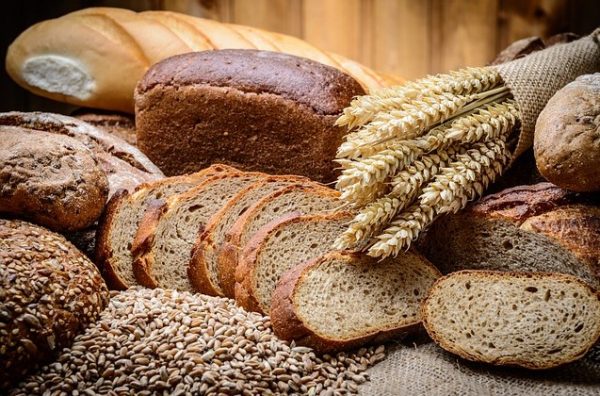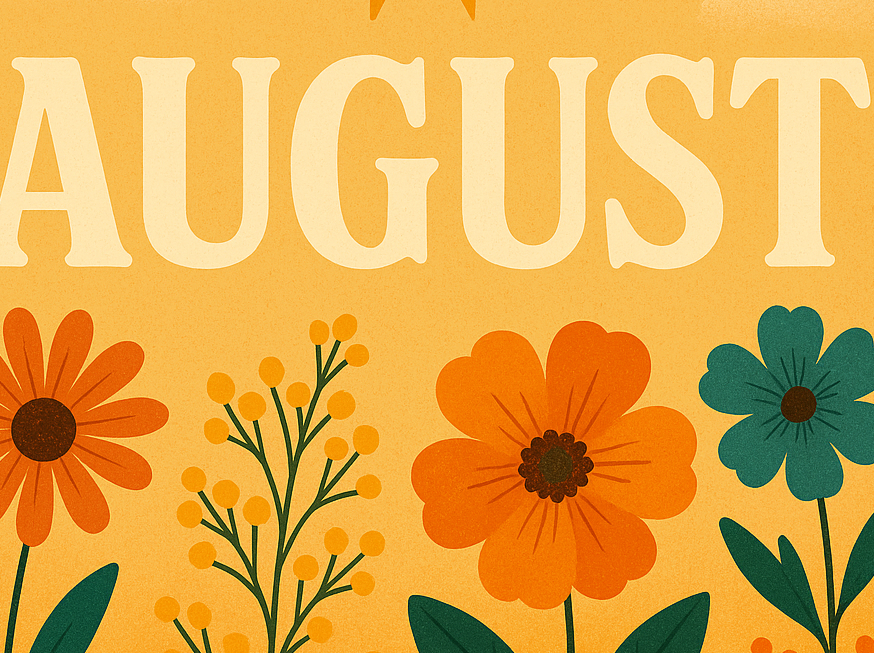This post may contain affiliate links. Please see my disclosure policy to learn more.
Freezing food is a great way to extend its shelf life, reduce waste, and save money, but not all foods handle the freezer equally well. While it’s generally safe to freeze most foods, some items don’t hold up in terms of texture or taste after thawing. You might be surprised at which foods freeze beautifully and which ones turn out mushy, grainy, or just plain unappetizing. To keep your freezer organized and your food safe, always label and date everything you store.
Dairy and Eggs:
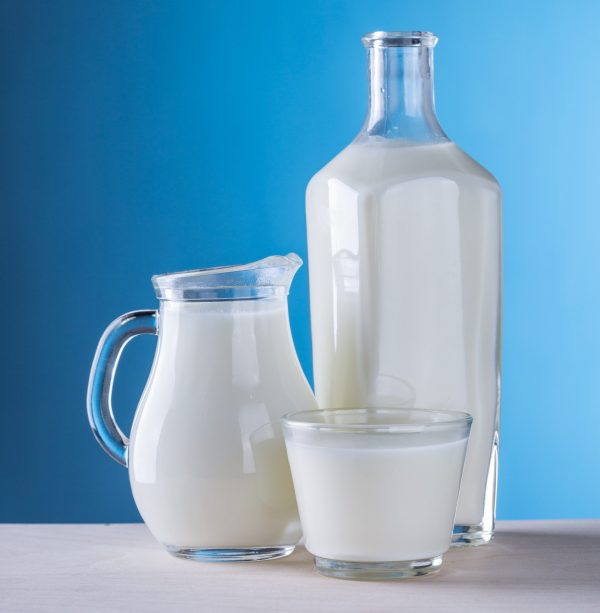
Milk – To freeze milk in the original plastic container, you will need to remove about an inch to allow for expansion. You can also freeze it by pouring it into ice cube trays, freezing it, and then transferring it to freezer bags for storage. Frozen milk should be used within 3-6 months, thawed in the refrigerator, and shaken well before using.
Butter – Butter can be frozen in the package you purchased it. It can be frozen for up to a year any longer and the taste and texture may change.
Cheese – You can freeze a block of cheese in the package you purchase it in, or cut it into portion sizes and freeze it in air-tight packages. Packages of shredded cheese freeze really well. If freezing for longer than two months, place the pack of shredded cheese inside a heavy-duty freezer bag to help prevent freezer burn. Most cheese will become crumbly after being frozen, so it’s best if it’s being used for cooking.
Yogurt – You can freeze yogurt, but the consistency may change. It works great for smoothies or quick frozen treats.
Eggs – Do not freeze eggs in the shell; eggs expand while freezing, and the shell will break. The best way to freeze eggs individually is in muffin tins or ice cube trays. Once frozen, transfer them to freezer bags. For best results, mix the yolk and white before freezing. Egg yolks can become thick when frozen. The Spruce Eats offers detailed instructions on freezing egg yolks. Cooked eggs, like scrambled eggs and omelets, also freeze really well.
Dairy and Eggs that Don’t Freeze Well:
Cooked egg whites – They become rubbery
Sour cream – Only freeze if you will be cooking with it, as it will separate and the texture will change
Cream Cheese – The texture will change, but it can still be used for cooking
Cottage Cheese – Will become grainy, but can still be used for cooking
Mayonnaise and mayo-based salads – Will separate, and the texture will not be appetizing
Cream-based soups and sauces – They can separate and curdle
Heavy or Whipping Cream – Will not be able to whip after freezing, but can be frozen if you whip it first.
Meat:
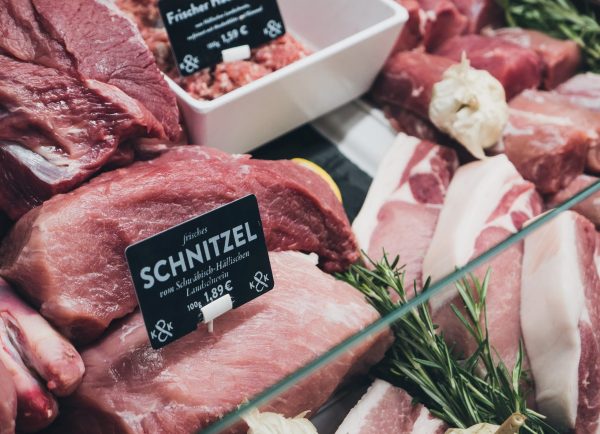
Red Meat, Pork, Poultry, and Seafood – Can all be frozen. Wrap meats very tightly in either plastic wrap or freezer paper, pressing the wrapping right up against the surface of the meat. Then seal it inside a freezer bag or use a food sealing machine. Double wrapping helps prevent freezer burn.
Casseroles – To avoid having dishes you might need in the freezer for months, you can bake casseroles in disposable foil pans, and cool them completely before covering them. Can be reheated in the foil pan.
Stews and Soups – Cooled soups can be frozen in freezer-safe bags. Lying them flat for more room. ( Cream-based soups don’t freeze well)
You have probably heard that it’s not safe to refreeze the meat once it’s been frozen and then thawed. There are some exceptions to this, depending on how it was thawed and for how long it was thawed. You can also refreeze meat if you cook it first. You may be interested in 10 frozen food safety myths debunked on the Today Show’s website.
Vegetables:
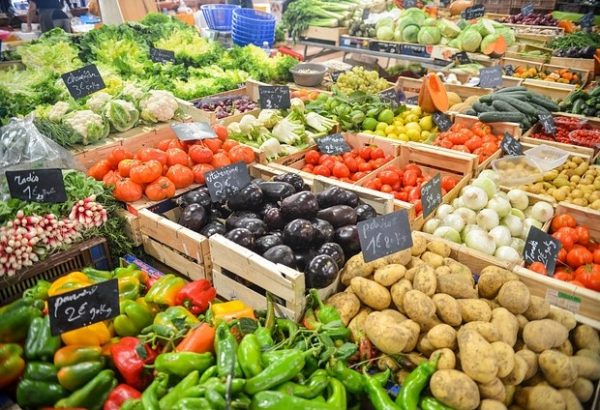
Most Vegetables can be frozen; however, many of them will only be good for cooking once frozen.
Avocados – Cut in half, remove the seed and shell, freeze in halves or mash, and add lemon or lime juice. Once frozen avocados are best used for guacamole or in dressings.
Fresh Corn – Can be frozen on the cob in the husk. Corn from the Grocery store should have the husk removed and be blanched before freezing. You can also cut the corn off the cob for freezing.
Asparagus, Broccoli, Brussels sprouts, Cauliflower, Carrots, Green Beans, Okra, Tomatoes, Summer Squash, and Zucchini – Benefit from being blanched before freezing. Blanching is a process in which you boil or steam vegetables briefly until they are partially cooked.
Peas – Peas freeze great straight from the garden, shelled, and freeze in freezer-safe containers or bags.
Mushrooms, Cabbage, Onion, Celery, and Bell Peppers – Have a high water content, but can be chopped and frozen if you plan on cooking with them.
Potatoes – Don’t freeze well raw; however, if you cut and cook them until al dente, you can then freeze them. Mashed Potatoes can also be frozen. Baked Potatoes tend to dry out.
Herbs – Herbs can be frozen in water, butter, or olive oil. Place cut herbs in an ice cube tray, and cover with water, melted butter, or oil. Once frozen, transfer to freezer-safe containers. To be used in cooking.
Vegetables that don’t freeze well:
Vegetables with high water content will give unfavorable results.
Cucumbers, Lettuce, Radishes, and Sprouts – Have too much water and will become mushy when frozen.
Fruits:
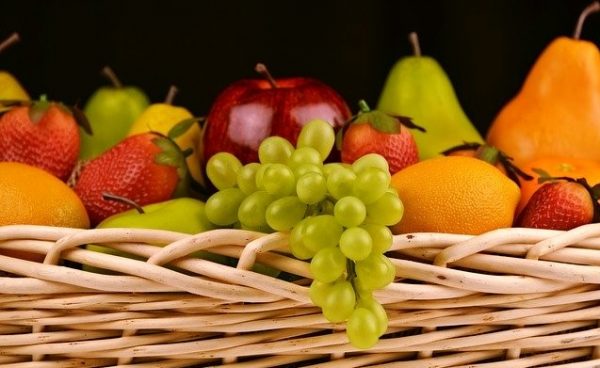
All fruit can be frozen. Especially if you are cooking with them or using them in smoothies.
The best method for freezing fruit is to clean and cut it into chunks; small fruit (berries & grapes) can be left whole. Spread them in a single layer on a cookie sheet or tray, and freeze them until firm. Once firm, transfer to freezer-safe containers or plastic freezer bags.
Apples – To prevent oxidation, apples can be soaked in lemon juice before freezing.
Bananas – Can be frozen in the peel or cut and placed in freezer bags, great for baking and smoothies
Citrus – Wash and dry to remove any wax coating. Citrus can be frozen whole or sliced prior to freezing. Remove from the freezer as needed. Perfect for zesting and juicing.
Stone or Pit Fruit – Fruits that contain a pit can be frozen, but you should remove the pits first.
Melons – They have a high water content, and they will become mushy after being frozen if you thaw them. Eat them frozen or use them in smoothies from a frozen state.
Loaves of bread, Dough, Grains, Nuts & Baked Goods:
Store-bought bread – Can be frozen in the bag it was purchased in, try to press out any excess air. Thaw on a wire rack, turning often, or hang up to thaw to prevent hard spots.
Homemade bread – This should be completely cooled before wrapping tightly and freezing.
Dough – Yes, you can freeze any dough; thaw before baking. Ultimate Guide for Freezing Dough.
Baked Goods and Pastries – Should be cooled completely before freezing. For best results, they should be double-wrapped for freezing.
Tortilla Shells – Can be frozen and thawed in the package they are purchased in or in freezer bags.
Grains – Rice and Brown Rice, Quinoa, Rye, Wheat Berries, Barley, Buckwheat, Millet, and Bulgur Wheat all freeze well. Cook large batches of grains and let them cool. Freeze in plastic freezer bags, laying them flat in the freezer.
Pasta – Cooked pasta should be cooled completely and frozen in individual portion sizes. Add a little water, and thaw in the microwave.
Oats and Flour – Freezing Oats and Flour can greatly extend their shelf life and help protect them from pest infestations.
Nuts & Seeds – Nuts and Seeds are high in oil and actually benefit from being stored in the freezer. Keeping nuts in the freezer extends their shelf life. They can be frozen in the shell or out in.
Snacks:
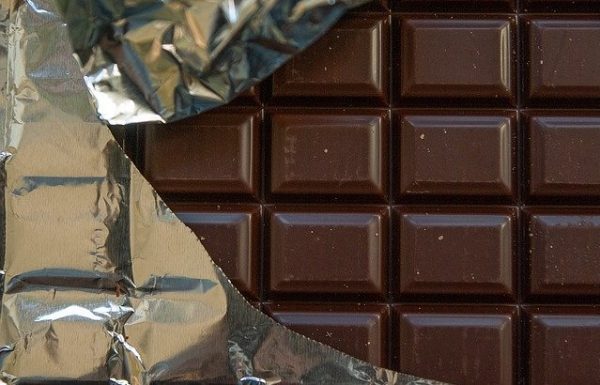
Chocolate and Candy – Most candy can be frozen, but bring the temperature of the chocolate down gradually by refrigerating it before putting it in the freezer.
Potato Chips – You can freeze a whole bag of chips to prolong the shelf life and prevent them from getting stale.
Foods You Shouldn’t Freeze
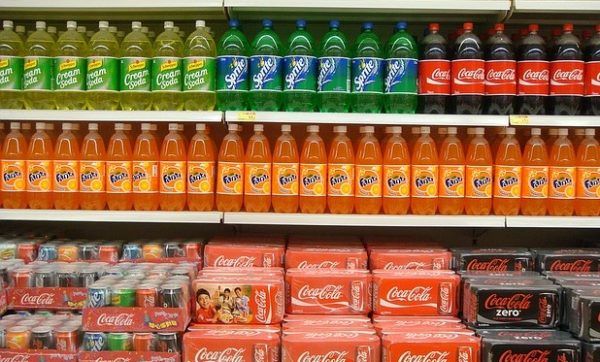
Desserts with meringue – Whipped egg whites are sensitive to cold and will become soggy.
Desserts with a crumb topping – Crumb topping will get soggy.
Fried foods – Will become soggy
Gelatin – Will separate
Carbonated Beverages – Not only will it lose its carbonation the container can also explode
SaleBestseller No. 1
YIHONG 6 Pack Clear Pantry Organizer Bins, Plastic Containers with Handle for Kitchen,Freezer,Cabinet,Closet,Bathroom Under Sink Storage
- Make Storage More Simple — These clear storage bins are versatile enough to fit easily in your fridge, refrigerator as well as pantry shelves, and cabinets, make your storage easier and help to keep your refrigerator, fridge and pantry look neat and organized.
- Multi-Purpose — This set comes with 6 pcs same size bins, measures 11.2x 7.5 x 6 inches; these storage bins are great for storing your drinks, fruits, vegetables, yogurts, packaged goods, canned foods, baby foods, boxed foods, condiments, spices, bottled beers, small toys, toiletries, and more.
- Functional Storage For Any Space — Ideal for refrigerator, fridge, deep pantry shelves, cabinet, kitchen, bathrooms,laundry room ,under sink bedrooms, garages, living rooms, craft rooms, offices and other places. You can decide where to use these cabinet organizer bins according to your need.
- Clear View and Stackable— The visible clear material makes it easy to see what each storage bin contains, making it easier to locate your items and bring more convenience to your daily life. Stackable to maximize space when not in use.
- Easy to Carry with Built-Handles — Easy-grip side handles allow you to easily pull the bins out and select what you need. Made of premium BPA free durable material. Just need to wash with warm water and soap, don't place it in the dishwasher.
SaleBestseller No. 2
Tafura 10 Pack Leakproof Freezer Containers for Food with Twist Top Lids - 32 Oz BPA Free Reusable Plastic Soup Containers with Screw On Lids - Ideal for Meal Prep, Leftovers & Pantry Organization
- Tafura 32 Oz premium leakproof soup containers with screw-on plastic sealed lids are perfect for soup freezer containers, food prep, portion control, and for anything that needs a container.
- Leakproof freezer storage containers - Tafura deli container seal will keep your food great with no mess. The airtight sealed covers ensure long-lasting freshness and prevent freezer burns. Great to use as freezer containers for liquids and solid food.
- Bpa Free Food Storage Containers - These plastic containers are made of high-quality food-safe material, 100% BPA Free, Microwave safe, Freezer safe, and Reusable.
- Premium design - Our freezer container is stackable, so it keeps your home/freezer/fridge organized. It's also easy to store when not in use, or for travel and transport.
- Our quart containers with lids are great as travel containers, lunch containers, soup containers for freezing, to-go containers, and food storage containers. 32 Ounce is equivalent to 1 Liter /1 Quart › See more product details
Bestseller No. 3
BiuLeon 6 Pack-24 oz Freezer Storage Containers, Plastic Food Storage Containers with Twist Top Lids, BPA Free and Reusable Soup Containers with Lids, Leakproof/Microwave/Dishwasher Safe
- 6 Pack-24oz Food Containers: This set includes [6 pack - 24 oz] food storage containers with lids. Ideal for storing liquids and messy foods like soups, overnight oats, stews, sauces, fruits, leftovers, pasta, snacks and cereals.
- BPA Free & Safe Material: Our freezer storage containers are made of high quality food grade material, BPA free. These food storage containers can be stored in the refrigerator, heated in the microwave, and washed in the dishwasher. (Remove the lids before putting in the microwave).
- Twist-Top Lids: These food containers with lids are designed with twist-top lids to ensure an airtight and leak-proof. Provides a storage solution for liquid foods such as soups, sauces. You never have to worry about food or liquid spills again.
- Stackable and Portable: Our overnight oats containers with lids are designed to be stackable and save space in your kitchen. plastic small containers with lids are lightweight and easy to carry anywhere. Perfect for picnics and on-the-go.
- Reusable and Durable: These soup containers with lids are reusable. It is an environmental friendly option for food storage which can reduce the use of disposable plastic containers. Great for meal prep, portion control, and leftovers.
SaleBestseller No. 4
Dipoo 60 Sets (120-Piece) Deli Containers with Lids, 32/16/8 oz X 20 Set Each, Leak-Proof & BPA Free Airtight Takeout Plastic Food Storage Containers for Soup, Freezer/Microwave/Dishwasher Safe
- 【60 Complete Set】:The package includes 60 complete set deli containers with lids, featuring 20 sets x 32/16/8 oz each, They are the perfect choice for your daily food storage and meal preparation.
- 【Premium Quality】:Made from premium food - grade polystyrene, these BPA-free food storage containers with lids ensures your food remains safe and uncontaminated.
- 【Leak - Proof】: Equipped with a tight - sealed lid design, these containers offer excellent leak - proof performance.
- 【Freezer/Microwave/Dishwasher Safe】:These disposable food containers can withstand a temperature from -4℉ to 248℉ (cup only), suitable for the use in freezer, microwave and dishwasher ( top rack).
- 【Multi - Purpose】:Ideal for storing soups, foods, fruits, snacks, and meal preps, these plastic containers are perfect for picnics, work lunches, takeout food, or storing leftovers.
- Make Storage More Simple — These clear storage bins are versatile enough to fit easily in your fridge, refrigerator as well as pantry shelves, and cabinets, make your storage easier and help to keep your refrigerator, fridge and pantry look neat and organized.
- Multi-Purpose — This set comes with 6 pcs same size bins, measures 11.2x 7.5 x 6 inches; these storage bins are great for storing your drinks, fruits, vegetables, yogurts, packaged goods, canned foods, baby foods, boxed foods, condiments, spices, bottled beers, small toys, toiletries, and more.
- Functional Storage For Any Space — Ideal for refrigerator, fridge, deep pantry shelves, cabinet, kitchen, bathrooms,laundry room ,under sink bedrooms, garages, living rooms, craft rooms, offices and other places. You can decide where to use these cabinet organizer bins according to your need.
- Clear View and Stackable— The visible clear material makes it easy to see what each storage bin contains, making it easier to locate your items and bring more convenience to your daily life. Stackable to maximize space when not in use.
- Easy to Carry with Built-Handles — Easy-grip side handles allow you to easily pull the bins out and select what you need. Made of premium BPA free durable material. Just need to wash with warm water and soap, don't place it in the dishwasher.
- Tafura 32 Oz premium leakproof soup containers with screw-on plastic sealed lids are perfect for soup freezer containers, food prep, portion control, and for anything that needs a container.
- Leakproof freezer storage containers - Tafura deli container seal will keep your food great with no mess. The airtight sealed covers ensure long-lasting freshness and prevent freezer burns. Great to use as freezer containers for liquids and solid food.
- Bpa Free Food Storage Containers - These plastic containers are made of high-quality food-safe material, 100% BPA Free, Microwave safe, Freezer safe, and Reusable.
- Premium design - Our freezer container is stackable, so it keeps your home/freezer/fridge organized. It's also easy to store when not in use, or for travel and transport.
- Our quart containers with lids are great as travel containers, lunch containers, soup containers for freezing, to-go containers, and food storage containers. 32 Ounce is equivalent to 1 Liter /1 Quart › See more product details
- 6 Pack-24oz Food Containers: This set includes [6 pack - 24 oz] food storage containers with lids. Ideal for storing liquids and messy foods like soups, overnight oats, stews, sauces, fruits, leftovers, pasta, snacks and cereals.
- BPA Free & Safe Material: Our freezer storage containers are made of high quality food grade material, BPA free. These food storage containers can be stored in the refrigerator, heated in the microwave, and washed in the dishwasher. (Remove the lids before putting in the microwave).
- Twist-Top Lids: These food containers with lids are designed with twist-top lids to ensure an airtight and leak-proof. Provides a storage solution for liquid foods such as soups, sauces. You never have to worry about food or liquid spills again.
- Stackable and Portable: Our overnight oats containers with lids are designed to be stackable and save space in your kitchen. plastic small containers with lids are lightweight and easy to carry anywhere. Perfect for picnics and on-the-go.
- Reusable and Durable: These soup containers with lids are reusable. It is an environmental friendly option for food storage which can reduce the use of disposable plastic containers. Great for meal prep, portion control, and leftovers.
- 【60 Complete Set】:The package includes 60 complete set deli containers with lids, featuring 20 sets x 32/16/8 oz each, They are the perfect choice for your daily food storage and meal preparation.
- 【Premium Quality】:Made from premium food - grade polystyrene, these BPA-free food storage containers with lids ensures your food remains safe and uncontaminated.
- 【Leak - Proof】: Equipped with a tight - sealed lid design, these containers offer excellent leak - proof performance.
- 【Freezer/Microwave/Dishwasher Safe】:These disposable food containers can withstand a temperature from -4℉ to 248℉ (cup only), suitable for the use in freezer, microwave and dishwasher ( top rack).
- 【Multi - Purpose】:Ideal for storing soups, foods, fruits, snacks, and meal preps, these plastic containers are perfect for picnics, work lunches, takeout food, or storing leftovers.

